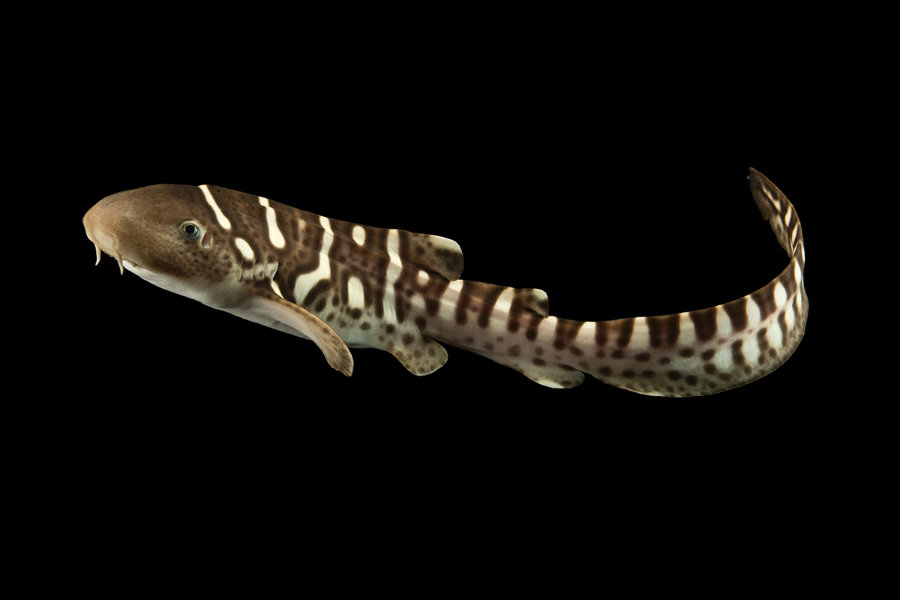A female zebra shark from the Townsville Aquarium in Australia has impressed scientists since she has learned to reproduce without a male. The zebra shark, called Leoni, managed to have three babies in early 2016 after being separated from her partner in 2012.
Leoni met her partner at the aquarium in 1999, and she spent more than a decade with the male shark. They had many offspring until, in 2012, she was taken to another tank without a male shark to mate with. After spending years alone, she naturally developed the ability to reproduce asexually. Scientists say some vertebrates have that ability, though it is uncommon for an animal that has a sexual reproduction history.

“In species that are capable of both reproductive modes, there are quite a few observations of switches from asexual to sexual reproduction,” says Russell Bonduriansky at the University of New South Wales in Sydney. “However, it’s much less common to observe switches in the other direction.”
Asexual reproduction is uncommon in these species
Leoni is a female zebra shark living in the Townsville Aquarium in Queensland. She and her partner had around two dozens of babies from 1999 to 2012. But Leoni was taken to another tank at the aquarium, where she remained alone without her family. Shockingly, Leoni after being used to reproduce sexually, she learned to reproduce without the intervention of a male shark and gave birth to three babies last year.
Scientists thought at first that Leoni managed to do so by storing her ex partner’s sperm to use it when she wanted to fertilize her eggs. This intrigued Christine Dudgeon, from the University of Queensland. She and her colleagues tested Leoni’s new babies and found out that the three of them carried only their mother’s DNA. Therefore, it was a case of asexual reproduction. But, though Leoni’s babies have only her DNA, it doesn’t mean they are their mother’s clones. They only received half of Leoni’s genetic diversity.
Scientists say she just learned to reproduce on her own. However, this is a very strange case since asexual reproduction is not often observed in animals that have a history of sexual reproduction.
According to Dr. Dudgeon, some vertebrate species such as certain sharks, turkeys, Komodo dragons, rays, and snakes, can reproduce asexually, though they usually reproduce sexually.
An extreme form of inbreeding that reduces the genetic diversity
Leoni’s case is almost unique. The switch from sexual to asexual reproduction has only been observed twice: once with an eagle ray and the other with a boa constrictor, in which in both cases, the animals were in captivity. Russell Bonduriansky reaffirmed Dr. Dudgeon’s statement by expressing that species that can reproduce both ways, don’t usually switch from asexual to sexual reproduction, but a switch from sexual to asexual reproduction is extremely uncommon. As well, the scientists expressed that this asexual reproduction case, though fascinating, is not ideal for the species’ genetics, since it reduces the diversity. In sharks, asexual reproduction has only been observed seven times, and Leoni’s case is the first switch from sexual to asexual reproduction in sharks.
“This is an extreme form of inbreeding, and the fact that these animals can survive, at least for short periods of time, with this highly reduced genetic diversity really challenges the way that we think about reproduction,” said Dr. Dudgeon “For the most part we are taught that having sex is incredibly important because it increases our genetic diversity, which we need to be healthy, to combat different pathogens and different environmental conditions, so it’s a great surprise”
This was possible thanks to an adjacent cell called “polar body” that fertilized the egg with the females own genetic material. The process is called parthenogenesis, which means “virgin creation” in Greek.
Are male becoming obsolete?
It is incredible that some female animals are able to reproduce by itself, to continue the species until a male is found. This has raised the question on whether males would become obsolete one day, given the fact that it is possible for certain species to achieve asexual reproduction.
Scientists say that it is not the case because this is a temporary mechanism for the female to pass the DNA to another female from another generation until sexual reproduction is possible. However, it is not a sustainable way of reproduction and survival because, after some generations, it reduces the species’ genetic diversity and adaptability.
“People are amazed when we tell them we have leopard sharks that don’t need males, a lot of the males get a bit frightened because they think ‘oh no, we’re becoming obsolete!'” said Dr. Dudgeon.
If the genetic diversity is great, the changes of the species to fight diseases and survive are higher. Research on animals switching from sexual to asexual reproduction is scarce. Even Dr. Bonduriansky says that it could be more common than scientists realize, at the moment.
The story of Leoni’s case was published in the journal Scientific Reports. Asexual reproduction is, in fact, an excellent way to resist isolation without losing all of the genetic diversity, but it is not a very good long-term strategy. It is important to mix up the gene pool and increase the diversity, which is why males are still needed. As well, it is important to highlight that Zebra sharks are among the endangered species.
Source: New Scientist
